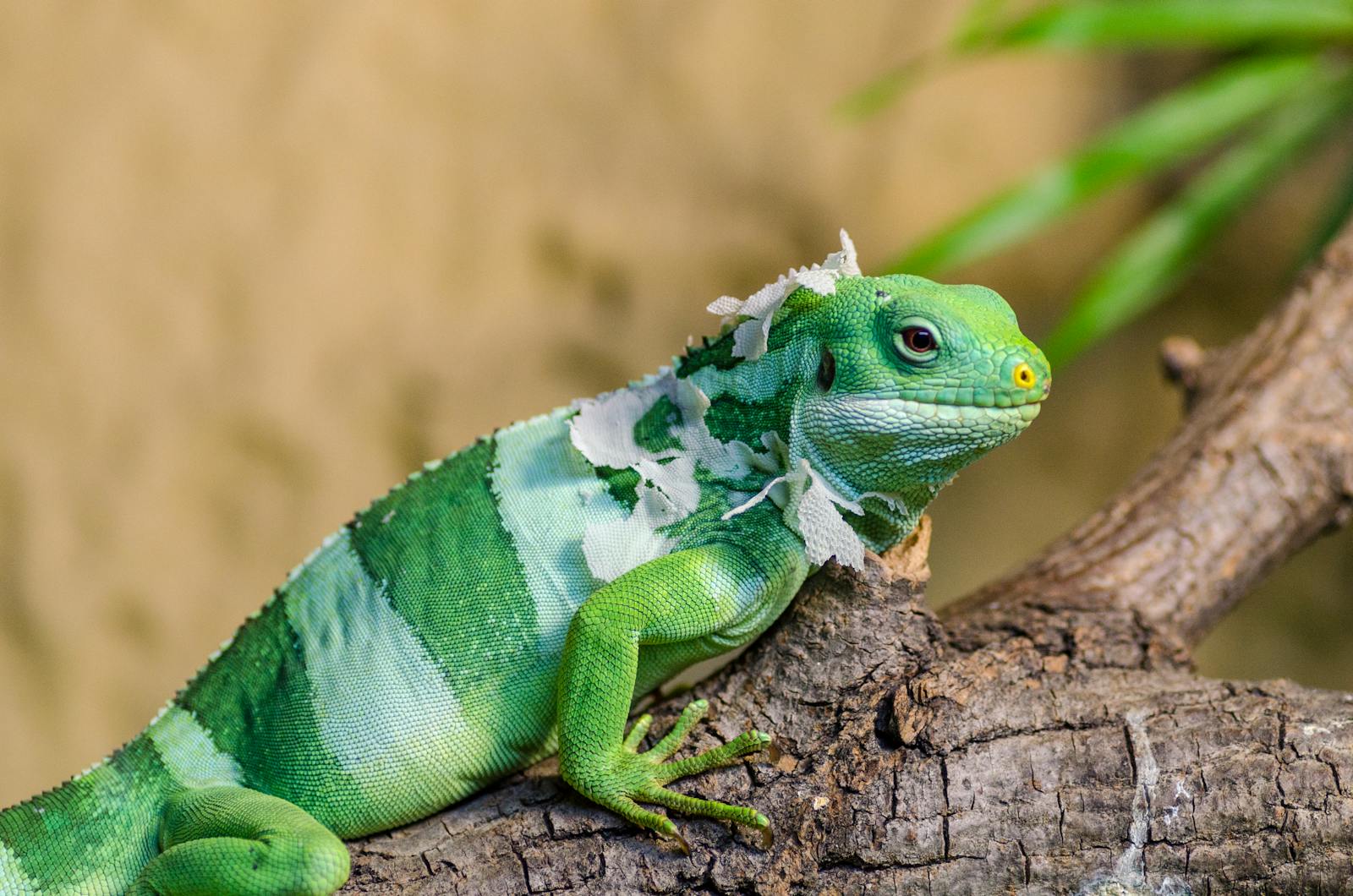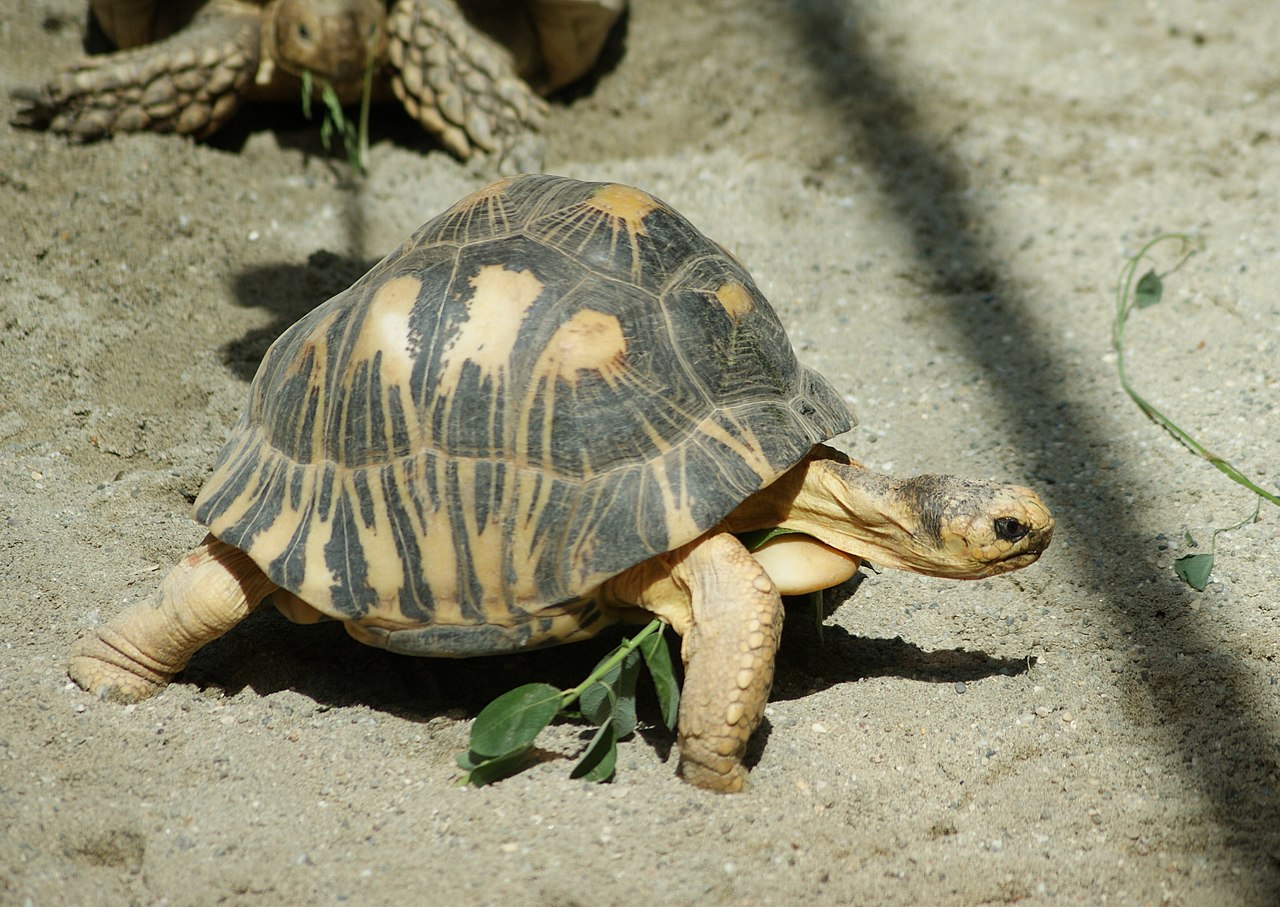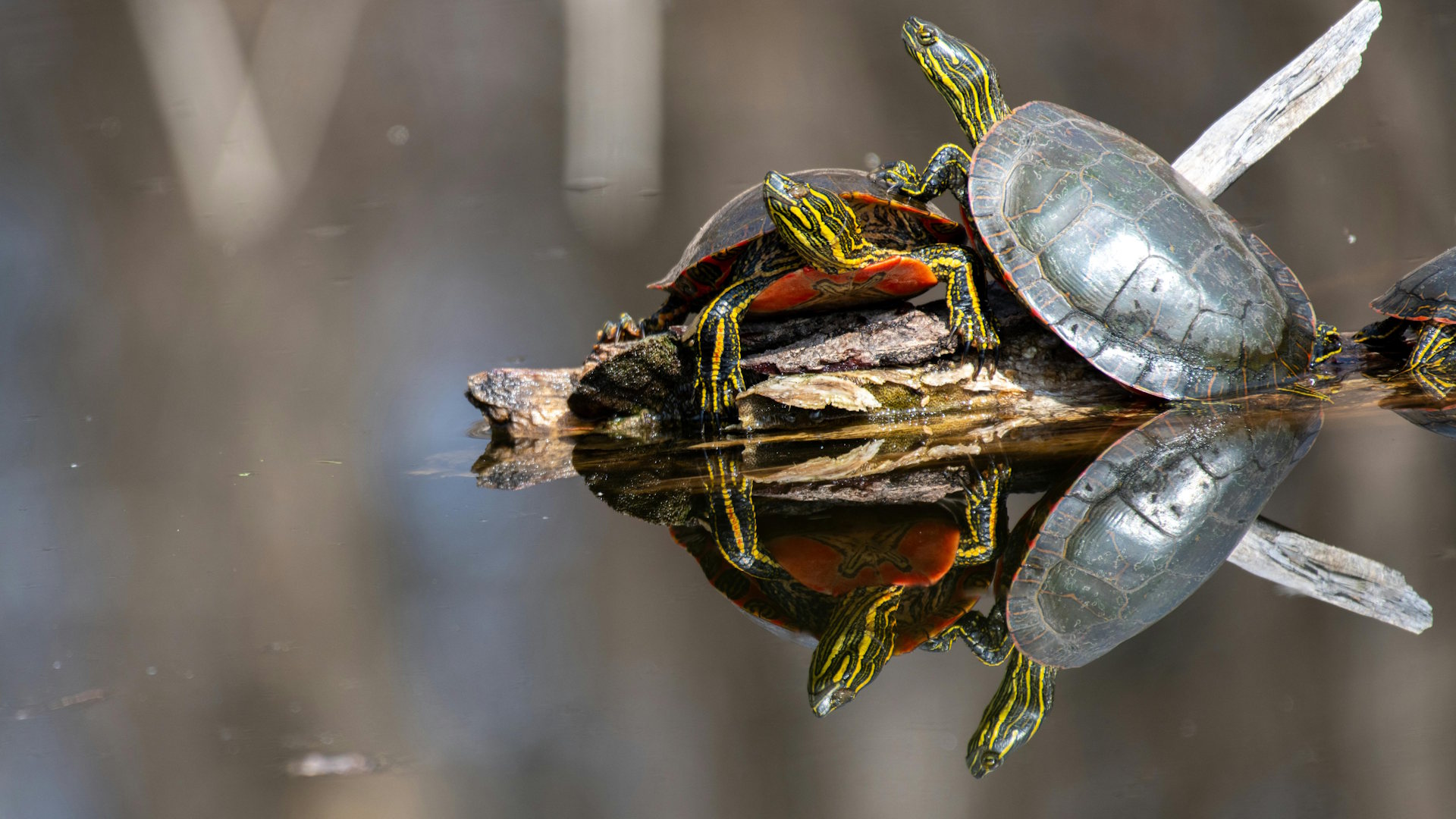Bringing a new turtle into your home is an exciting experience, but introducing it to an enclosure that already houses another turtle requires careful planning and execution. Turtles are territorial creatures with specific environmental needs and social dynamics that must be respected during the introduction process. Whether you’re expanding your chelonian family or combining collections, a thoughtful approach will help ensure the health, safety, and happiness of all your shelled companions. This comprehensive guide will walk you through the essential steps to successfully integrate a new turtle into an existing habitat while minimizing stress and preventing potential conflicts.
The Importance of Quarantine
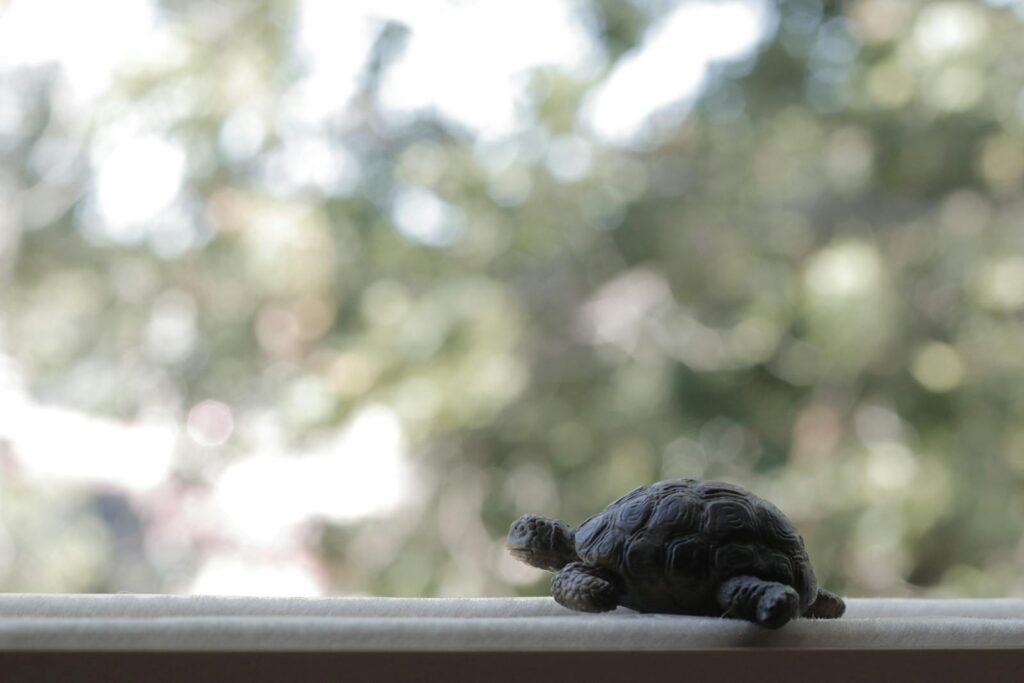
Before introducing any new turtle to your existing setup, a proper quarantine period is absolutely essential and non-negotiable. New turtles should be kept completely separate from your current pets for a minimum of 30-90 days, depending on the species and their origin. This quarantine period allows you to monitor the newcomer for signs of illness, parasites, or other health concerns that could potentially spread to your established turtles. During quarantine, maintain the new turtle in a separate room if possible, using dedicated cleaning tools and washing hands thoroughly between handling each animal. This critical step has saved countless turtle collections from devastating disease outbreaks and should never be skipped, even if the new turtle appears perfectly healthy or comes from a reputable source.
Selecting Compatible Turtles
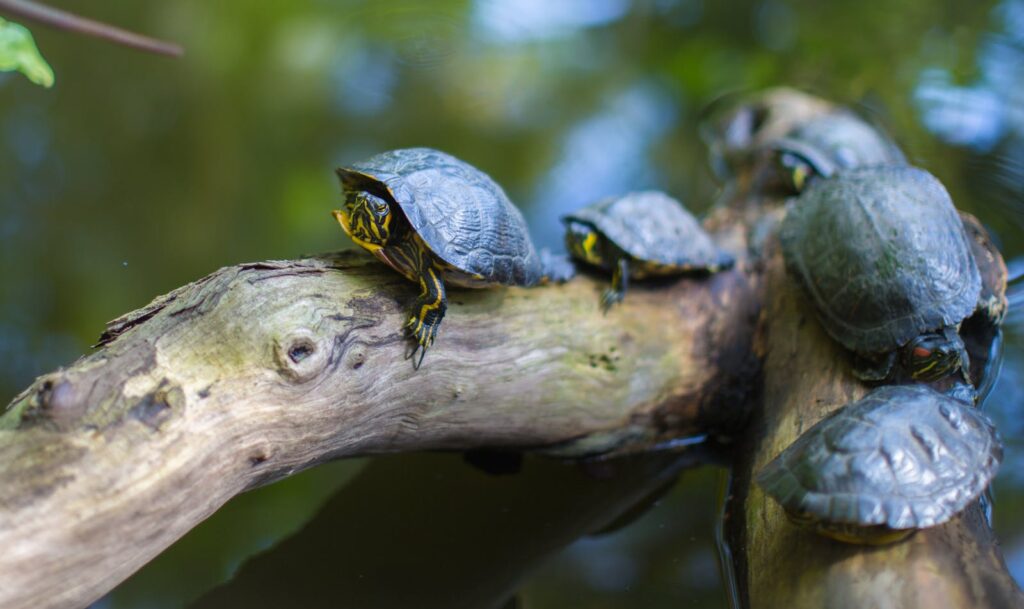
Not all turtle species can cohabitate peacefully, so research is crucial before attempting any introduction. As a general rule, it’s best to house the same species together, though certain species can sometimes coexist if their environmental needs align closely. Size compatibility is also critical – turtles with significant size differences may result in the larger individual bullying, injuring, or even killing the smaller one. Gender combinations should be carefully considered as well; male turtles can be particularly aggressive toward other males during breeding season, while keeping multiple females with one male might result in the females being harassed. Research your specific species’ temperament, territorial tendencies, and social behaviors thoroughly before deciding if cohabitation is appropriate for your particular turtles.
Preparing an Adequate Enclosure Size
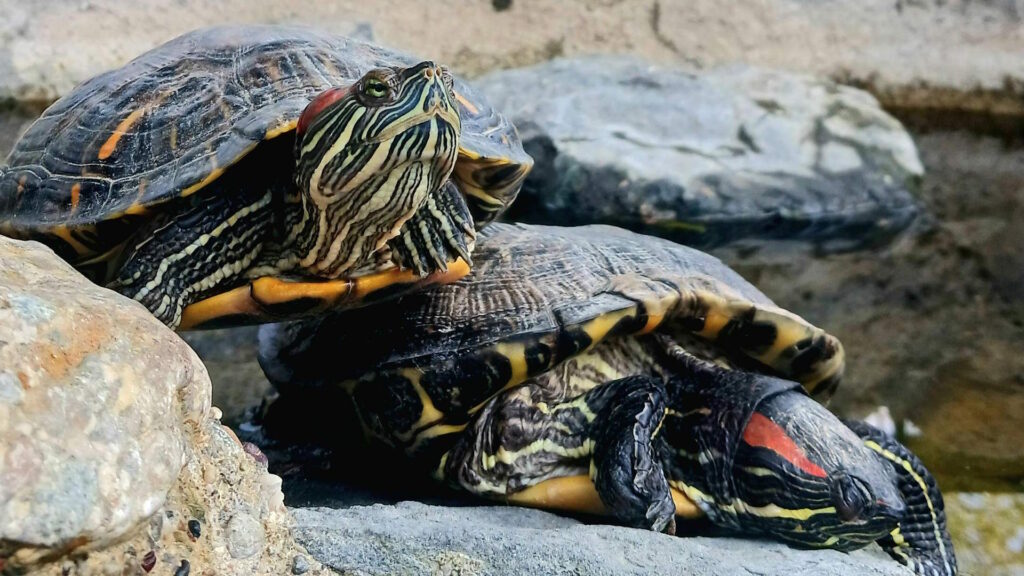
Insufficient space is one of the primary causes of aggression between turtles, making proper enclosure sizing absolutely critical for successful cohabitation. As a general guideline, you should provide at least 10 gallons of water per inch of shell for each aquatic turtle, with additional land area for basking. For example, two 4-inch red-eared sliders would require a minimum of 80 gallons, though more is always better. The enclosure should be significantly larger than what you’d provide for a single turtle, allowing each animal to establish its own territory and retreat from interactions when desired. Remember that turtles continue growing throughout much of their lives, so plan for their adult size rather than their current dimensions to avoid future overcrowding issues.
Creating Multiple Basking Areas
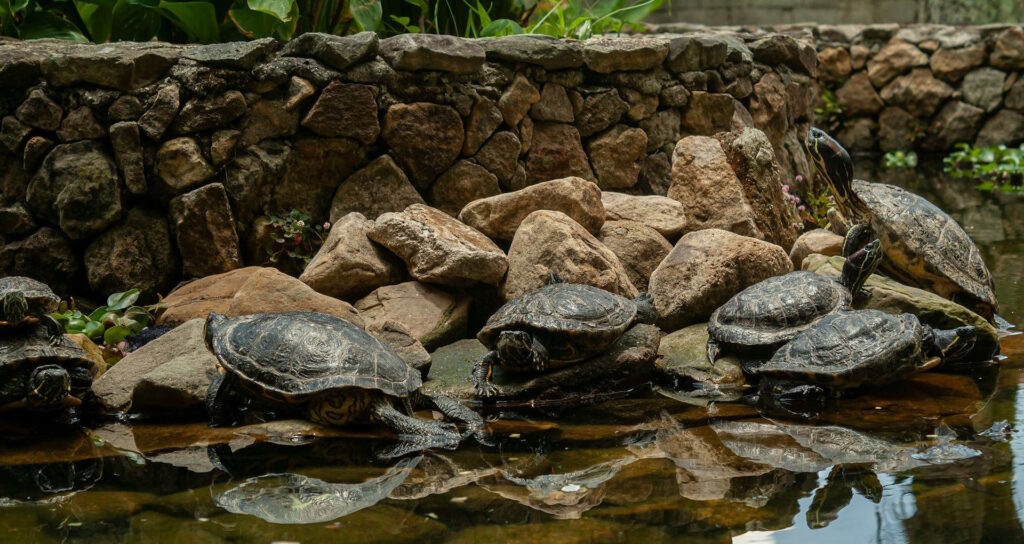
Competition for prime basking spots is a common source of conflict between cohabitating turtles, making multiple basking areas an essential feature of a shared enclosure. Each basking area should be large enough to comfortably accommodate all turtles simultaneously, with easy access from the water and proper UVB lighting coverage. Creating basking platforms at different heights can help reduce competition, as some turtles may prefer higher positions while others opt for spots closer to the water. Strategic placement of visual barriers like plants or decorations between basking areas can further reduce territorial disputes by preventing direct line-of-sight between turtles while they’re basking. Closely monitor basking behavior during the first few weeks to ensure all turtles are getting adequate access to these critical areas.
Establishing Feeding Routines
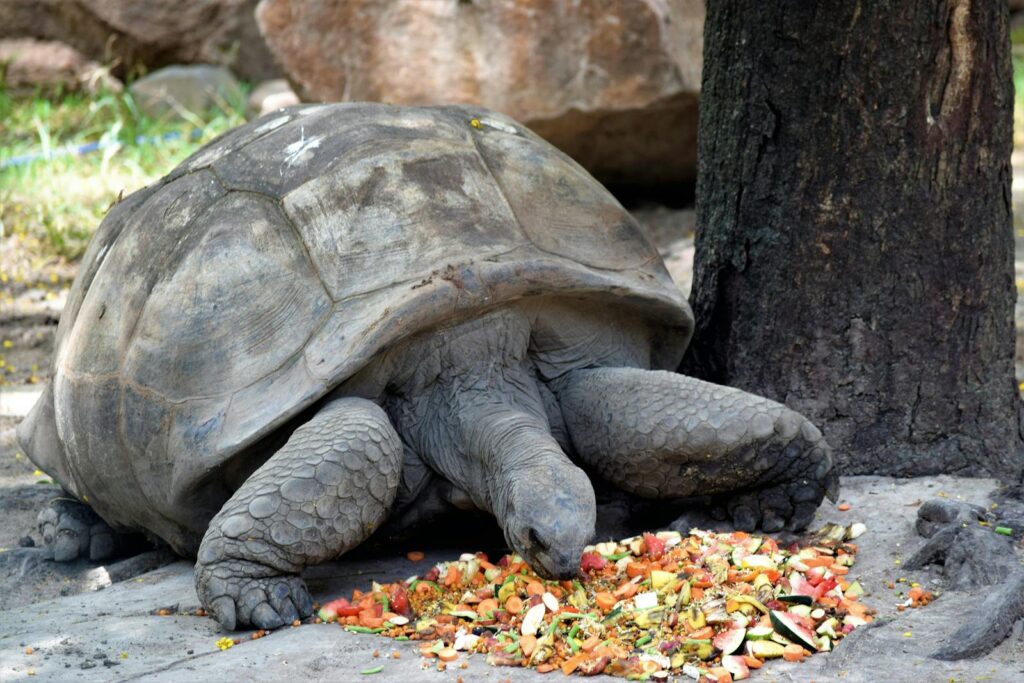
Food competition can quickly escalate into serious aggression between turtles, making separate feeding strategies crucial for peaceful cohabitation. Many experienced keepers recommend feeding turtles in a separate container away from the main enclosure, which allows you to monitor each turtle’s food intake while preventing water quality issues from discarded food. If separate feeding isn’t practical, consider using feeding tongs to target-feed each turtle in different areas of the tank, or use floating feeding rings to create designated feeding zones. Creating a consistent feeding schedule helps reduce food aggression, as turtles learn when to expect meals rather than constantly competing for resources. Some species may require different dietary components or frequencies, so research each turtle’s specific nutritional needs to ensure all inhabitants receive appropriate nutrition.
Monitoring Water Quality Parameters
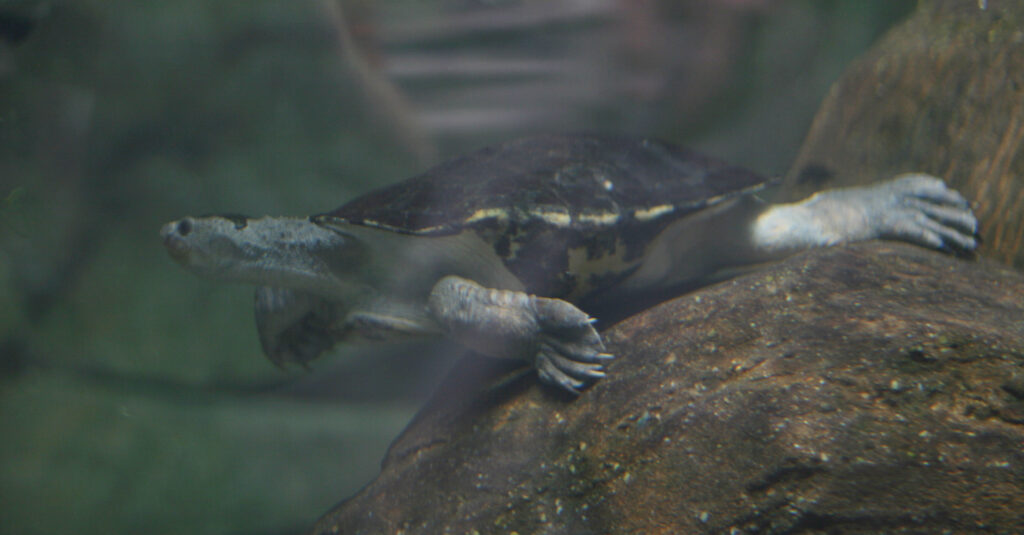
Adding another turtle to an established enclosure significantly increases the bioload, making water quality management more challenging but even more essential. Multiple turtles produce substantially more waste, requiring more powerful filtration systems – aim for filters rated for at least twice your actual water volume when housing multiple turtles. Test water parameters (ammonia, nitrite, nitrate, pH) frequently during and after the introduction period, as stress can increase waste production. Partial water changes may need to be performed more frequently than with a single turtle, typically 25-30% weekly depending on your filtration system and stocking density. Inadequate water quality not only compromises health but can also increase stress and aggression between turtles, creating a negative cycle that undermines successful cohabitation.
The Introduction Process
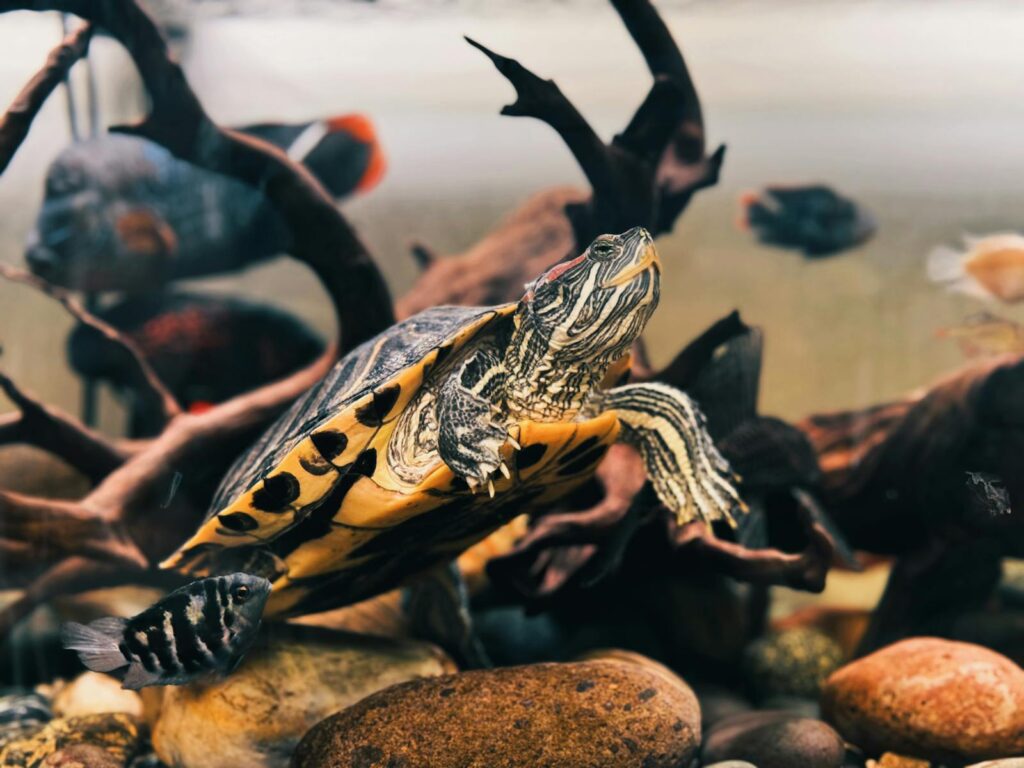
After completing quarantine and preparing the environment, the actual introduction should be conducted methodically to minimize territorial responses. Begin by rearranging the entire habitat – shifting decorations, plants, basking areas, and substrate – to disrupt any established territories before adding the new turtle. Many experts recommend introducing both turtles to the newly arranged environment simultaneously so neither has a “home field advantage.” Schedule the introduction for morning hours when turtles are naturally more active and have a full day to adjust before nighttime. Closely supervise the first interaction, keeping nets or gloves ready to separate turtles if aggressive behavior escalates beyond minor posturing. Some turtles may temporarily stop eating due to the stress of a new tankmate, so monitor appetite closely during the adjustment period.
Recognizing Normal vs. Problematic Behaviors

Understanding the difference between normal turtle interactions and concerning aggression is crucial for successful cohabitation management. Some initial dominance displays are normal and typically involve one turtle extending its neck toward another, mild chasing, or swimming above the other turtle to establish hierarchy. These behaviors usually diminish within days or weeks as the hierarchy stabilizes. However, behaviors that require immediate intervention include repeated biting, ramming, flipping, preventing access to basking areas, or relentless chasing that doesn’t allow the subordinate turtle to eat or surface for air. Subtle signs of a stressed subordinate turtle include spending excessive time hiding, avoiding basking even when the dominant turtle is elsewhere, weight loss, or developing shell or skin problems. Document interaction patterns with notes or videos to help identify whether behaviors are improving or worsening over time.
Creating Visual Barriers and Hiding Spaces
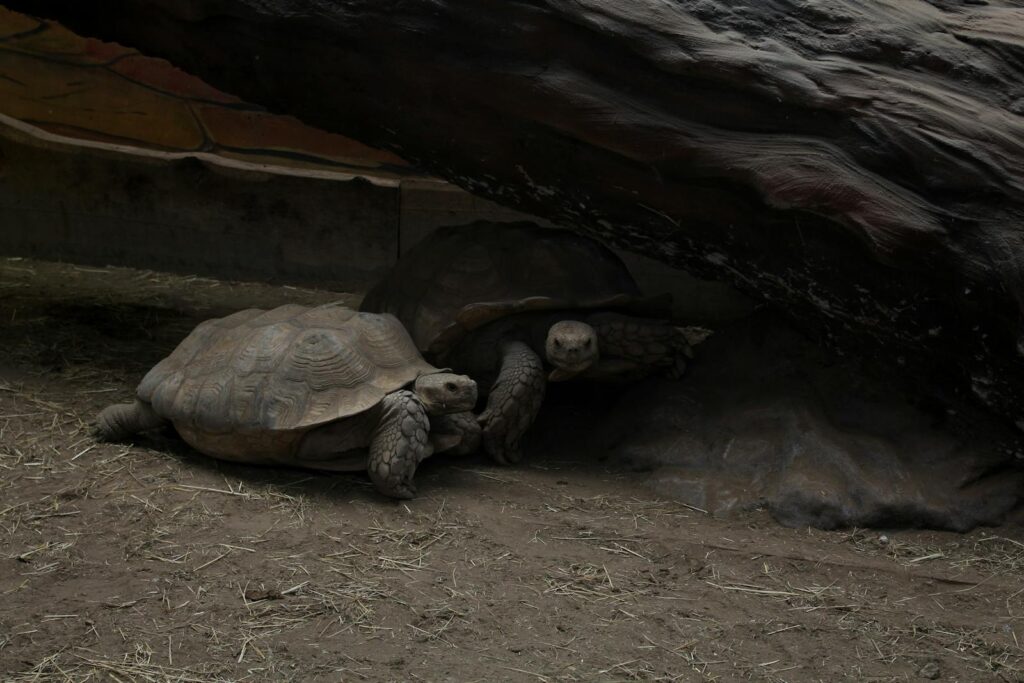
Strategic arrangement of the enclosure’s interior can significantly reduce aggression by creating visual barriers and defined territories. Aquatic plants (real or artificial), driftwood, rock formations, and commercial turtle hides provide valuable privacy that allows subordinate turtles to escape from dominant individuals. Position these elements to break up swimming paths and sight lines across the enclosure, preventing constant visual contact that might trigger territorial responses. Create multiple “zones” within the habitat that offer similar resources (basking, hiding, swimming areas) in different locations, allowing turtles to select preferred areas without direct competition. Ensure that hiding spots are appropriately sized for your turtles, with openings large enough for easy entry but small enough to provide a sense of security and protection.
Temperature and UVB Requirements

Proper environmental conditions become even more critical when housing multiple turtles, as competition for optimal spots increases stress if conditions aren’t ideal throughout the habitat. Ensure temperature gradients allow all turtles to thermoregulate effectively, with water temperatures appropriate for your species (typically 75-80°F for most common pet turtles) maintained consistently with adequate heaters. Basking areas should provide sufficient surface temperatures (90-95°F for most species) across enough space for all turtles to bask simultaneously. UVB lighting coverage must extend to all basking areas, with bulbs positioned at manufacturer-recommended distances and replaced on schedule, typically every 6-12 months even if still illuminated. Inadequate heating or UVB exposure can compromise immune function, making turtles more susceptible to illness during the already stressful introduction period.
Health Monitoring During Transition

The introduction period places additional stress on both new and existing turtles, potentially triggering health issues that require prompt attention. Establish a baseline for each turtle’s normal appearance and behavior before the introduction, then conduct daily health checks during the transition period. Watch for changes in appetite, activity level, swimming patterns, or basking duration that might indicate stress or illness. Physical symptoms requiring veterinary attention include swollen or closed eyes, nasal or oral discharge, skin or shell discoloration, soft spots on the shell, or abnormal fecal matter. Weigh turtles regularly (at least monthly) to detect subtle weight loss that might indicate a turtle isn’t getting adequate nutrition due to competition. Remember that stress-related health problems may not appear immediately, so continued vigilance is necessary for several months after introduction.
When to Consider Separation
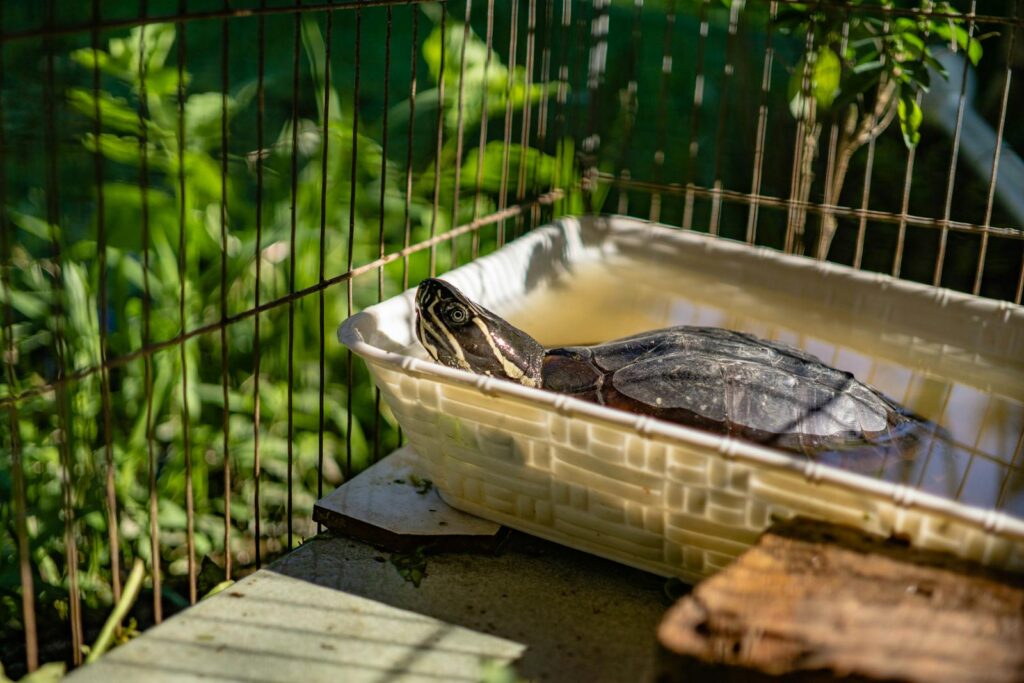
Despite best efforts, some turtle combinations simply won’t cohabitate peacefully, and recognizing when to permanently separate them is crucial for their welfare. Persistent aggression that doesn’t diminish after 2-3 weeks, especially if it prevents normal behaviors like feeding, basking, or swimming, indicates incompatibility that likely won’t resolve with time. Signs that a subordinate turtle is suffering include weight loss exceeding 10% of body weight, reluctance to emerge from hiding spots, physical injuries regardless of severity, or development of respiratory infections due to stress-compromised immunity. If separation becomes necessary, avoid multiple failed reintroduction attempts that further stress the animals; instead, commit to permanent separate housing with appropriate enrichment for each individual. Many turtle species thrive perfectly well when housed individually, often showing improved health, activity, and natural behaviors compared to stressful cohabitation situations.
Long-term Management Strategies
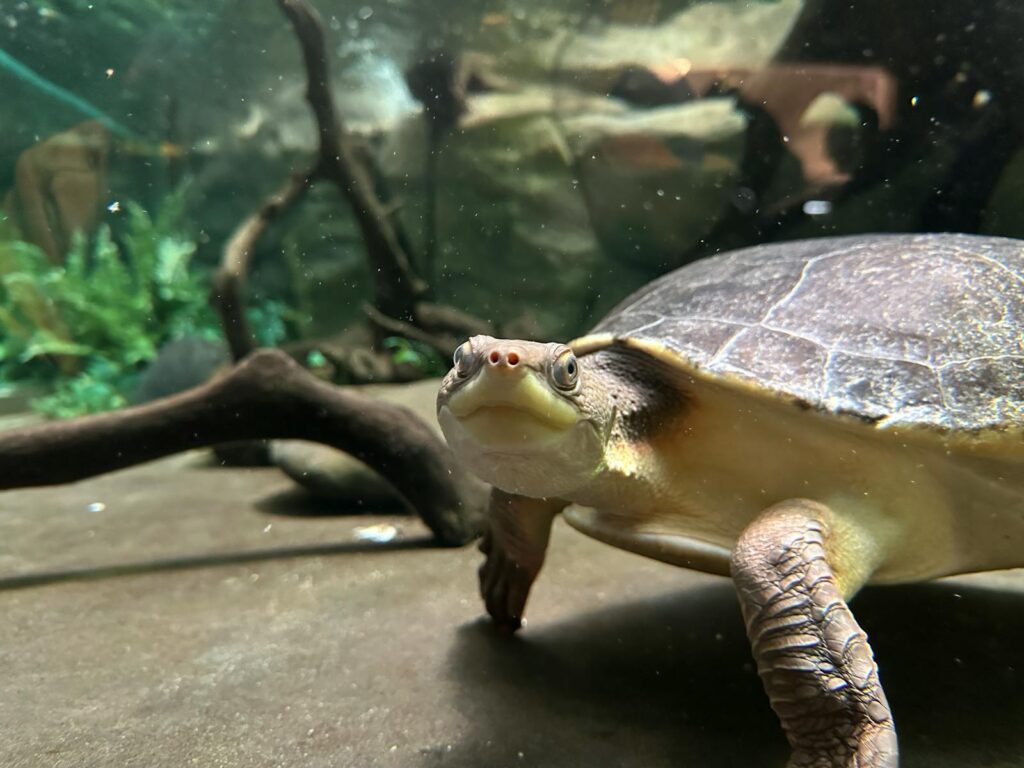
Successfully introducing turtles is just the beginning of a long-term management strategy that requires ongoing attention. Regular “resets” of the environment by rearranging decorations and features every few months can help prevent the establishment of overly defended territories. Maintaining consistent feeding routines, cleaning schedules, and handling practices provides stability that reduces stress-related behaviors. As turtles grow, be prepared to upgrade enclosure size accordingly, as space that was adequate for juvenile turtles quickly becomes insufficient for adults. Seasonal behavior changes, particularly increased aggression during breeding seasons, may require temporary separation or environmental modifications. Remain observant of subtle changes in interaction patterns, as relationships between turtles can evolve over time due to growth, maturation, or environmental factors, sometimes requiring adjustments to your management approach years after a seemingly successful introduction.
Conclusion
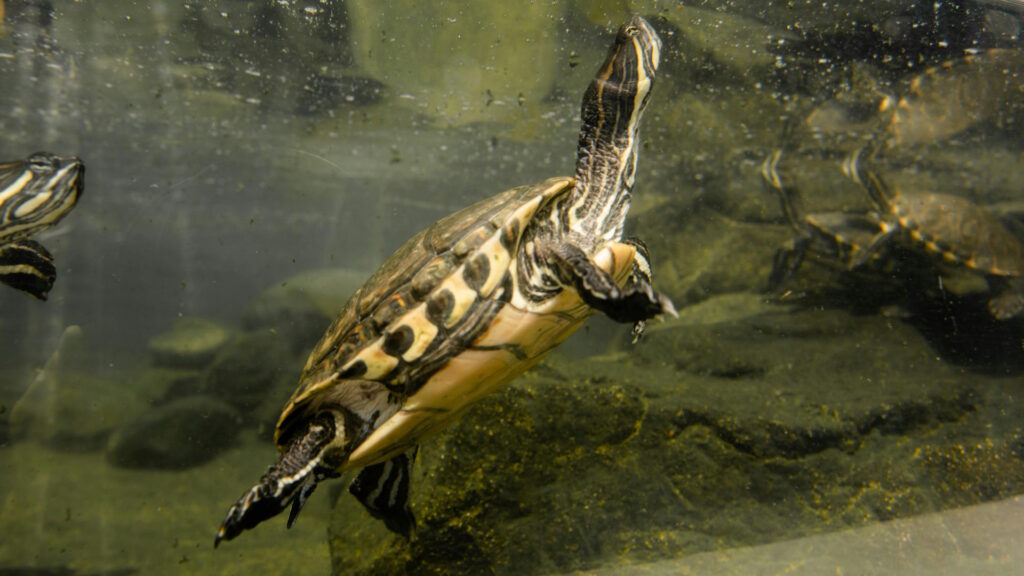
Successfully introducing a new turtle to an existing enclosure requires patience, preparation, and attentive observation. By following the guidelines outlined in this article—from proper quarantine procedures to creating adequate space and monitoring interactions—you can significantly increase the chances of a harmonious multi-turtle environment. Remember that each turtle has its own unique personality, and some combinations may simply be incompatible despite your best efforts. Prioritizing the health and wellbeing of your shelled companions should always be the determining factor in housing decisions. With the right approach and willingness to adjust your strategy based on your turtles’ responses, you can create an enriching habitat where multiple turtles can thrive together for years to come.


